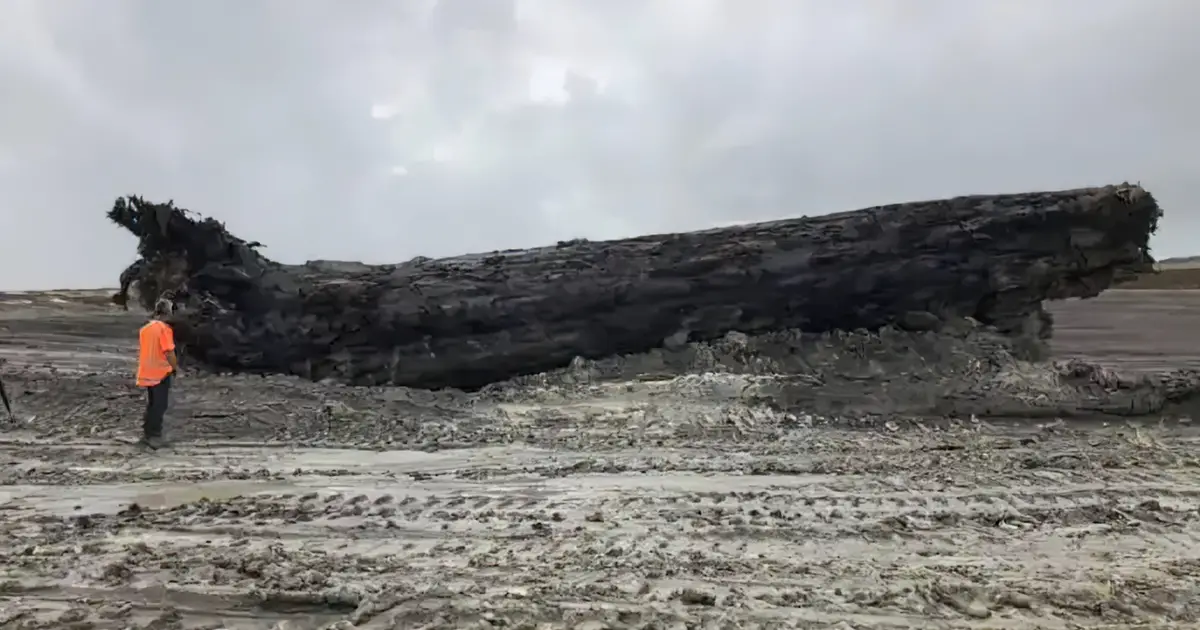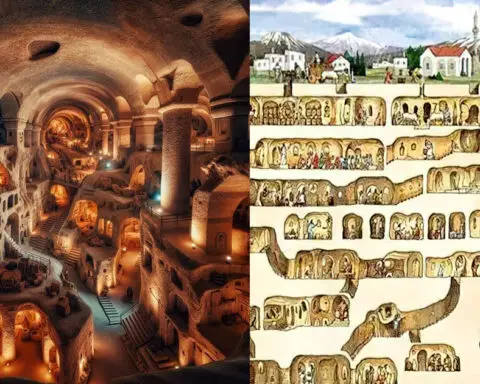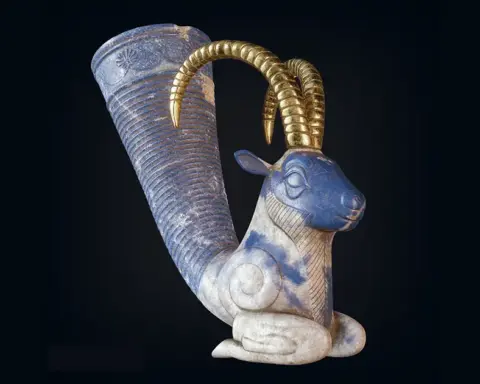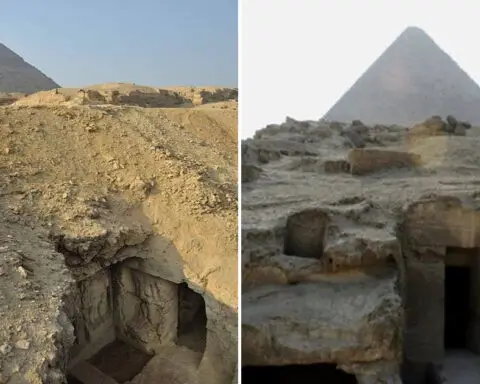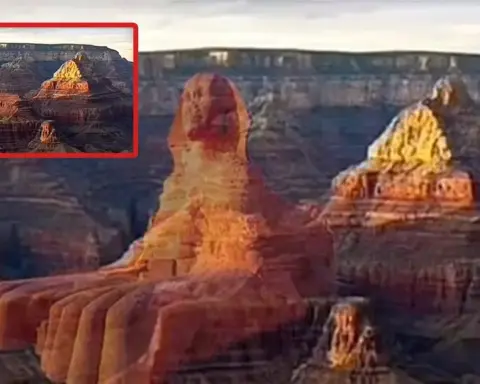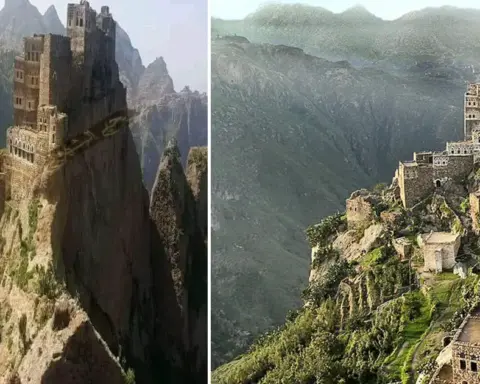In a land where the veils of time whisper ancient sagas and dormant relics lie entwined with secrets of old, a colossal 60-ton log emerged from the murky depths of a New Zealand swamp. A titan of antiquity, this 40,500-year-old Kauri log was unearthed amidst the ambitious construction of a new power station, heralding the promise of unraveling a cosmic puzzle that had long eluded human comprehension.
It wasn’t merely a weathered remnant of history; it was a cryptic oracle from an era steeped in enigma—the fabled Laschamp Event. This chronicle from the annals of time marked a momentous juncture when the poles of our planet engaged in a mystifying dance, an upheaval that reshaped the very essence of our world.
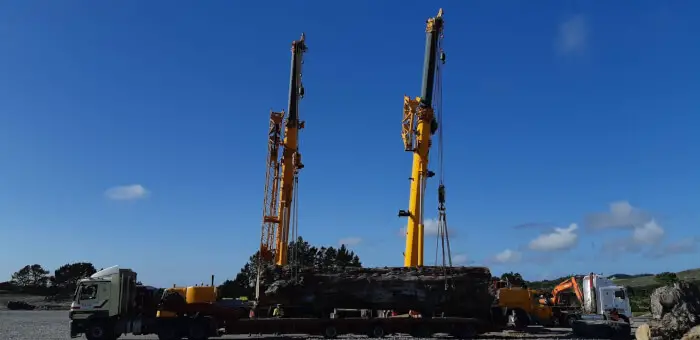
Concealed beneath layers of soil, nestled in the heart of a remote island in the Northern reaches of New Zealand, this ancient behemoth remained shrouded in secrecy, demanding an excavation of staggering proportions—900,000 cubic meters of earth had to yield before its arcane wisdom could be unveiled. And yet, upon its revelation, the local Maori tribe embraced it as a sacred relic, venerating its age-old narratives and guarding its esoteric wisdom.
It was the curious alignment of this arboreal relic’s age with the temporal tapestry of the Laschamp Event that ignited the flames of inquiry. Researchers meticulously traced the tree’s rings, seeking in their intricate patterns the elusive clues that might unfurl the cryptic inception and duration of this magnetic tempest that once gripped the planet in its ethereal embrace.
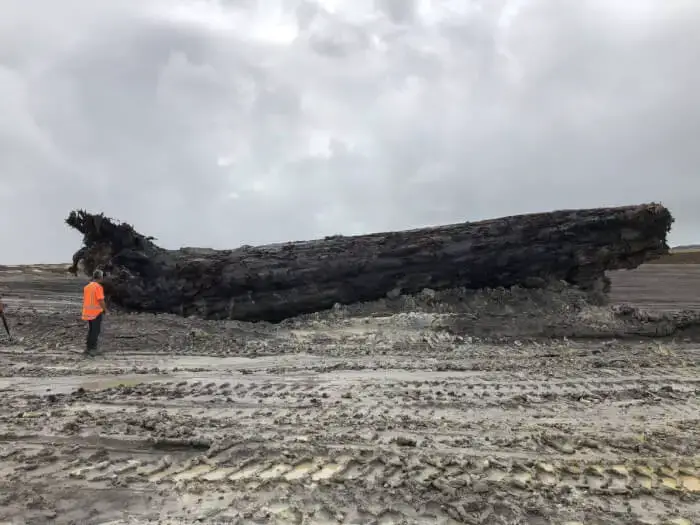
The aftermath of such celestial convulsions was profound—a weakening of Earth’s protective magnetic shield, an invitation for the Sun’s unrestrained radiance to cast its fiery gaze upon our world. It was a symphony of climatic upheavals choreographed by the cosmic waltz between Earth and its celestial neighbors.
Alan Hogg, a luminary from the revered halls of the University of Waikato, hailed the unearthly tree’s significance, heralding the serendipitous nature of its discovery and the tantalizing prospect it held for unraveling the veiled mysteries of time. Speculations abounded regarding the colossal relic’s lifespan, estimated to span an awe-inspiring 1500 to 2000 years before succumbing to the ravages of time.
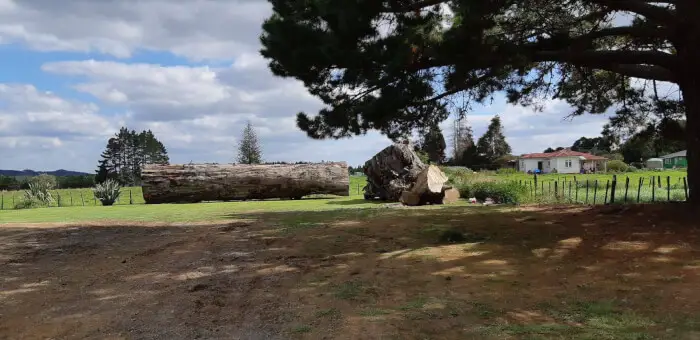
As the ancient giant emerged from its subterranean sanctuary, it found a new home in Ngwh Marae, welcomed with reverent ceremonies by the Maori’s hapū. Yet, the journey from its earthen cradle to its revered resting place was no ordinary feat. Sections of the mammoth log, each weighing tons, demanded the herculean strength of two 130-ton cranes. A laborious odyssey spanning 5 kilometers and four arduous hours culminated in the sacred tree’s hallowed resting site—a symbolic union of bygone epochs with the fabric of the present.
The Kauri log, an ancient sentinel from epochs long past, stands now as a testament to the boundless mysteries that linger within the folds of time, beckoning humanity to decipher the cosmic riddles that transcend eras and echo through the corridors of history. As researchers and custodians alike stand in awe of its silent wisdom, the world eagerly awaits the revelations it might yet yield, the answers to questions that have long haunted the corridors of human curiosity.

